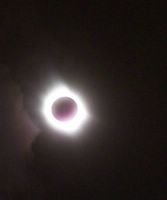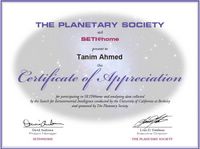
Planet B

The first image of a planet orbiting a Sun-like star has been captured by German scientists.
Nearly 150 planets have been found beyond the solar system but all except one of these have been discovered indirectly, either by observing the dimming of a star as the planet passes in front of it or by the star's wobble caused by the gravitational tug of an orbiting planet.
Imaging a planet directly is extremely hard because the glare of the star is many times brighter than light reflected by the planet. However, in the case of the star GQ Lupi, the planet is far from the star and is also young and warm, meaning it shows up quite brightly in infrared.
Ralph Neuhauser, at the Astrophysical Institute and University Observatory in Jena, Germany, and colleagues confirmed that the star’s companion really was a planet - and not just a faint star in the background – using two methods.
First, they discovered that the object, while warm, was colder than a star. Secondly, an array of images of the star taken from 1999 to 2004 by the Very Large Telescope in Chile, the Hubble space telescope and Japan's Subaru Telescope found that the distance between the objects had not changed, meaning they must be moving together.
“It appears to pass the observational tests for being a very low mass companion to its parent star," says Ray Jayawardhana, an expert in planet formation at the University of Toronto, Canada, who was not involved in the study.
"Now that we have a direct image, it's possible to start looking at what this planet’s atmosphere is made of and measure its temperature," he says. "It opens up a whole new arena for planetary science."






